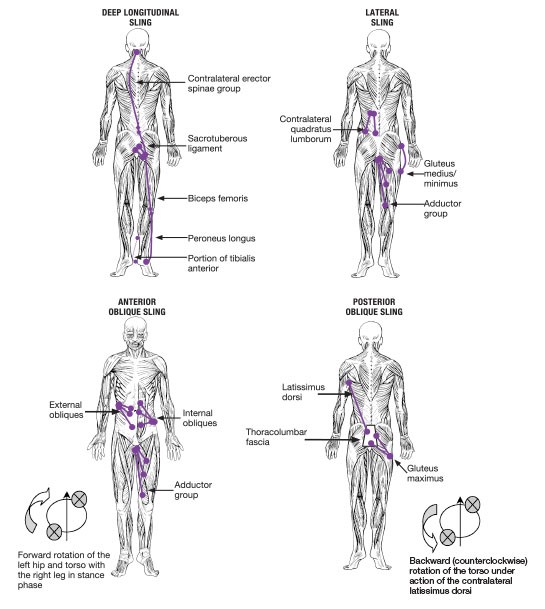It is a general knowledge that muscles attach to bones via the tendon and generate the movement around a joint under the stimulus of electrical signals sending from the nervous system. This is how our body works within musculoskeletal and neuromuscular system. The findings of myofascial researchers show us this doesn’t complete the whole picture. Human body operates as a whole unit in static or in motion binding in a myofascial network formed by fascia, connective tissue, in response to external force, gravity and ground reaction force. It is directly responsible for organizing mechanical forces which are distributed throughout the body. It profoundly influences the view on exercises and health.

Fascia and muscles are soft tissues but difference in their properties. Muscles are the contractile part. A muscle only creates movement at the joint as it crosses the joint such as flexing the elbow by contracting the biceps. The non-contractile component includes fascia or connective tissue which surrounds muscle fibers wrapping around all structures of our body and forms a web-like network responsible for controlling the forces of compression and tension. It enables force transferring from one section to another even when a muscle does not have to cross a joint.
Various models have been developed by several myofascial researchers to identify specific lines of pull organizing muscle, fascia and connective tissue connected throughout the different parts of body. These lines sometimes refer as “trains,” “slings” and “chains.” One of the most influential models is established by Thomas Myers, the author of the “Anatomy Trains”.

Large amount of mechanoreceptors presents in fascia enables this fascial system to communicate by detecting tension and transmit information around the body. The mechanoreceptors can sense the slightest stretch and strain placed on the body and transferring forces from one area to another through the lines of pull. In response to this feedback, the central nerve system will send signals via electrical impulses to stimulate the action of the muscles fibres and generate the movements.
Implications on health and exercises
The transmission of mechanical forces through fascia and connective tissue implies that our body acting as a unit. One area of the body may affect another. Keep the balance of stiffness and elasticity for our soft tissue is critical to maintain our health. We are conditioning the whole musculoskeletal systems into a more efficient structure that is capable of balancing the ever-present forces of compression and tension.
This tensional network can be a trace of a localized pain that caused by a distant part of the body. A muscle group particularly tight will create excessive motion along the link and associated tissue stress. Trigger points release will be employed to ease the stiffness. Training for flexibility is essential to balance the length tension throughout the body.
When we are loading the target muscle tissue in weight lifting, not only the target muscles are under stress, but different muscles will contribute and share in the force production via this network. Repeatedly training localized and isolated individual muscle will create unnatural tension and inhibits the system’s ability to dissipate force. Therefore when we come to the training, it is crucial to create the right stimulation to allow the success of all parts of the body to interact and produce free-flowing and highly adaptable movement.